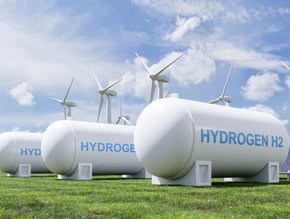How Duke Energy’s Tree-planting Improves Power Reliability

With focus on the energy transition, net-zero plans and efficient production in full-swing industry-wide, there are plenty of ways energy companies and their partners are engaging in pursuit of a more efficient and green future.
Despite technology unlocking a whole variety of solutions never-before fathomed nor possible, one industry leader is encouraging getting back to nature, presenting it as a key piece of the puzzle when it comes to improving power reliability with an added green bonus.
“Planting the right tree in the right place can help conserve energy, improve reliability and provide environmental benefits to our communities,” said Melissa Seixas, a President at Duke Energy.
“It's important we maintain trees and other vegetation along our lines to continue delivering the reliable service our customers and communities depend on. This helps us do that while keeping the environment healthy and beautiful.”
With this in mind, Duke Energy is donating sweetbay magnolia, bald cypress and crape myrtle to its customers to encourage a positive relationship between energy and the environment. In recent years, its customers have been in receipt of tens of thousands of donated trees.
How trees improve power reliability
When strategically planted, trees can boast a variety of environmental benefits which also improve power reliability.
According to the Arbor Day Foundation, a non-profit dedicated to the planting of trees that has a million members and has planted more than 500 million trees, this perennial plant can save energy in a whole manner of ways, including:
- Reducing the need for air conditioning through natural production of shade.
- Lowering heating costs as they break winter winds.
- Becoming a renewable source of fuel that burns with less air pollution than other fuels when the right equipment is used.
- Sequestering carbon, which is a threat and contributor to climate change.
- Reducing lawn space and the subsequent need for using a lawnmower.
This is especially true in cities, known as ‘heat islands’, which appear to be warmer than more suburban or rural areas. Tree planting in more densely populated areas can combat this issue and therefore the need for energy to combat the need for cooling solutions, for example.
Other energy-efficiency and environmentally-conscious initiatives by Duke Energy
Lynn Good, Duke’s CEO, has shaped her entire business strategy on pivoting to cleaner energy. In an interview, she said: “This single issue is so significant to our company,” she said.
Chief Sustainability & Philanthropy Officer Katherine Neebe has a front-row seat when it comes to the energy transition and actioning meaningful change for both Duke, the communities it serves and the planet as a result.
Duke, like many companies globally, is actively working toward a net-zero carbon emissions target of 2050. This is one of the reason that Neebe was attracted to working for Duke. In her role, Neebe also takes the lead in maintaining oversight of the Duke Energy Foundation. The foundation provides US$30 million in philanthropic support to help meet the needs of communities.

“As energy demand doubles and possibly triples by 2050 across our service territory, we need to significantly grow energy generation, retire 16 gigawatts (GW) of coal, and modernise the energy grid,” she said. “We need to do that in a way that provides reliable, affordable and accessible energy while also meeting our net-zero ambition. The engineering, environmental and social considerations to achieve this are significant. But there’s a real upside to the story too. As we look at our 10-year, US$145 billion capital spending plan, we anticipate that our clean energy transition is expected to bring roughly US$250bn in positive economic outputs.”
As part of its 2050 net-zero goals, Duke aims to cut its Scope 1, 2 and certain Scope 3 carbon emissions by 2030.
As a partial result of this, 95% of Duke’s calculated greenhouse gas footprint — whether that be directly from Duke or its partners in its value chain — is part of its net zero goal.
Neebe added: “In 2022, we took additional steps toward action on climate change by targeting energy generated by coal to represent less than 5% of total generation by 2030 and to fully exit coal by 2035 as part of the largest planned coal fleet retirement in the industry.”
This also bleeds into social issues and ESG, where Duke is in the driving seat and encourages a relationship so the company can manage the risks and the value creation in a way that is balanced for our customers and communities.
She concluded: “We believe deeply in engagement and are always happy to talk to and learn from others.”
*******************
Make sure you check out the latest edition of Energy Digital Magazine and also sign up to our global conference series - Sustainability LIVE 2024.
*******************
Energy Digital is a BizClik brand.






